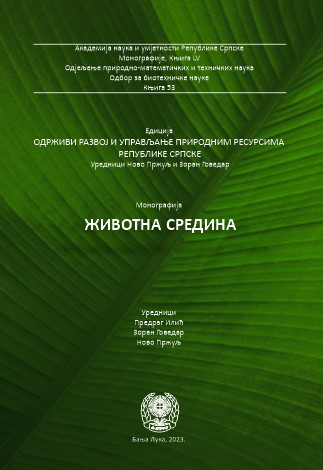Removal of pollutants from water as a function of sustainable development
DOI:
https://doi.org/10.7251/EORU2309097BKeywords:
Sustainable development, drinking water, waste water, ferrate(VI), pollutants, water treatmentAbstract
The realization of the concept of sustainable development is conditioned by the impact of human activities on natural resources, both renewable and nonrenewable. The basic areas that enable the concept of sustainable development are: food security, energy supply and environmental protection. Protection and use of water as the most important renewable resource is a problem present in all these areas. In the process of food and energy production, water is a raw material and means of work, and in environmental protection, the preservation of quality and protection of water from pollution, as well as water purification, is the most important problem. The constant increase in the number of inhabitants on planet Earth, as well as the accelerated development of society, industrial and technological, has led to the overexploitation of water resources, as well as increasing contamination of water. Decreasing the level of water quality reduces the possibility of its use, which has the immediate consequence of reducing its availability. Certain natural water selfpurification capacities can be reduced in extreme pollution or even completely eliminated. Such trends can lead, in the long term, to a significant reduction in water availability. Therefore, there is a constant need for simpler, more efficient and cheaper treatments for water purification. Conventional methods of water treatment of different origins are often accompanied by undesirable by-products, so modern research is aimed at finding environmentally friendly procedures. The ideal means for water treatment would be one that simultaneously disinfects, decomposes and oxidizes inorganic and organic pollutants, as well as removes colloidal or suspended material and heavy metals, without creating toxic side products. ferrate(VI) is recognized as one of the few such agents and is increasingly used in environmentally friendly water treatment processes. The use of ferrate(VI) as multifunctional chemical reagents has significant advantages in the simplicity and economic benefit of the water treatment procedure (use of one chemical, one dosing and mixing system and less production of sludge), as well as avoiding the formation of toxic by-products. The subject of this chapter is precisely the application of ferrate(VI) in the removal of pollutants from water of various origins in the function of sustainabledevelopment, through: reducing the use of chemicals, reducing the consumption of energy and water resources, environmentally friendly products, etc.
